Emboldened by my last backcountry camping trip, I wanted to try a different place. Meaning, hike into the wilderness carrying all you need, camp somewhere random in the forest, then hike out the next day. While there are trails, most backcountry often doesn’t have designated camping spots; you just have to find your own while not hurting the plants. Below is what I did and learned.
Trip Choice & Details
The concern was the list of suggested trips the park service provides scales in hiking challenge & camping level quickly. I copied the lists into Excel, then filtered the data, and the next in the list for winter is where you start at Thompson Trail and camp at Beecher Ridge. Instead of 2 miles, it’s 9.8 total; it’s about 5 miles the first day and 3 miles the next. It’s a big loop, basically. You do most of it day 1, then day 2, you can finish, or optionally extend Day 2. What I didn’t realize it’s up a mountain day 1, then down it day 2. The trail challenge & length was insanely more difficult. I’ve never hiked a mountain that big and that steep. I know many out west or in Europe would call the Appalachian Mountains “small hills”, but man, still work.
I ditched my tent and just brought my sleeping pad, air pad, and tarp with semi-closeable doors. I was hoping shedding that 7lbs would help, but my gear still ended up being 30lbs / 13.6 kilos. Whoops.
I haven’t worked out since last summer, and the only cardio I’ve done is my OwnWheel. I briefly started walking instead of OneWheeling the 1 mile trail behind my neighborhood with my backpack as practice to get in shape with my dog while he carries his pack. That said, still super out of shape. I only made it by walking 10 feet, stopping to breathe, then repeat. Nothing but willpower.
Gear Changes
My hammock will take 5 weeks given the company is backlogged. I had no intention of carrying that 4 person, 7lb tent again. I had seen online some backpackers just using a tarp and sleeping on the ground. So I bought an ENO House Fly tarp, an R 5 rated (meaning it keeps you warm) self-inflating sleeping pad & packed my blow up air pad again. The sleeping pad is comfortable and warm, but as a side sleeper, the air pad stacked underneath adds more comfort.
I bought a couple ThermaLite sleeping bag liners for the girls for their bags, but brought the hotter one JUST in case the 25 F / -3.8 C was 10 to 20 degrees colder at the higher elevation. That and I wanted to try it. I had read online the disparities in actual temperature these mini-blankets actually add so definitely wanted some personal experience with it.
The biggest change was water. I intentionally just brought 1 bottle (by accident; original plan was to not bring any). This trip had a specific stream you’re supposed to get water from before you dry camp (camp at a random place in the woods). Water is heavy, so I liked the idea of getting it and not having to carry it far. I also liked the idea of “dude, you’re thirsty and need it for food and coffee; you better find it and make the filter work!” as motivation. So I bought the gravity water filter.
Sadly, my pack was still heavy af. I’m still a n00b and need to find some more ultralight gear, erring on the side of comfort for sleeping.
The Salomon boots I bought 15 years ago in Halifax, Canada are beast and waterproof, but are heavy, kept my ankle locked, and gave me blisters when I go uphill. As someone who has super strong feet from Parkour and OneWheeling, I don’t need ankle support, so bought some Moab 2 some trail runners; waterproof shoes with traction. I only went 2 miles in them behind my neighborhood to break ’em in (not enough, but out of time).
I also replaced my metal poop trowel with a plastic one which was significantly lighter. No clue if it can dig in the frozen ground.
Lastly, I bought a waterproof trail map of Shenandoah. I folded it so it just encompassed the trails I was traveling on in a way that fit in my pocket.
Trip Details
Saturday and Sunday were both about 42 F / 5.5 C during the day and 25 F / -3.9 C at night (no clue if colder in the higher elevations). You park at a parking lot that’s deeply nestled near private homes. No cell signal. You then hike down a private driveway onto Thompson trail.
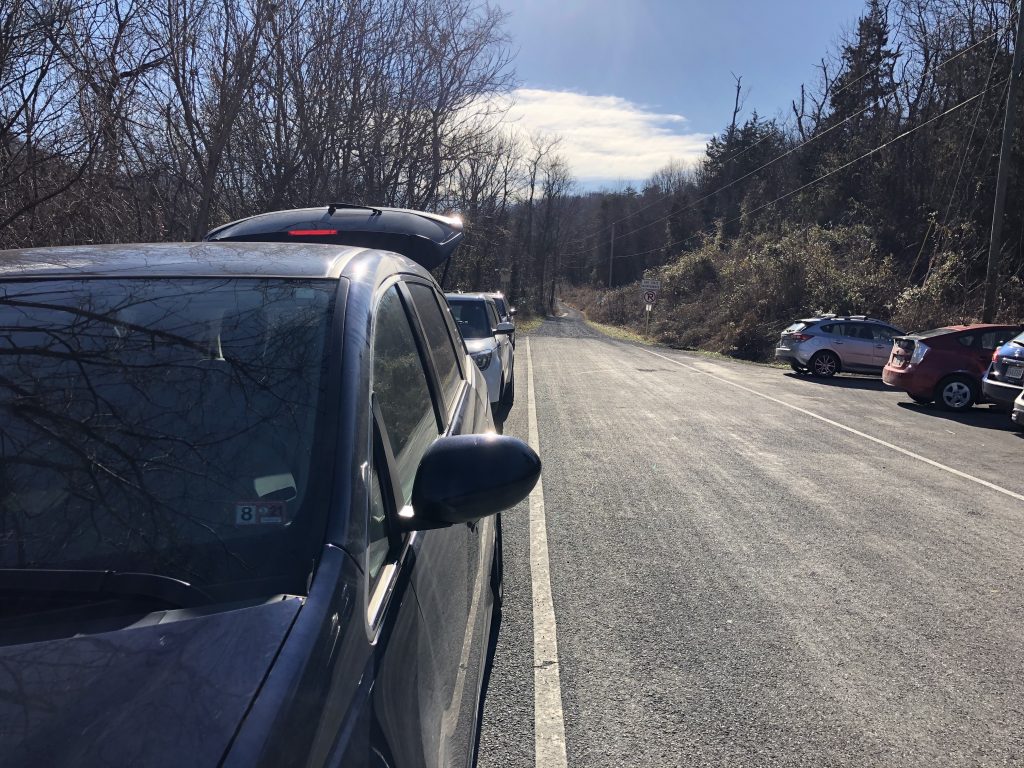
It’s a muddy, half frozen ground, root/rock/briar infested slog. The incline wasn’t too bad, but man, it’s a lot harder to Parkour with a loaded pack. That said, the new shoes were ace; I’m glad I bought them, so much better than those damn boots.
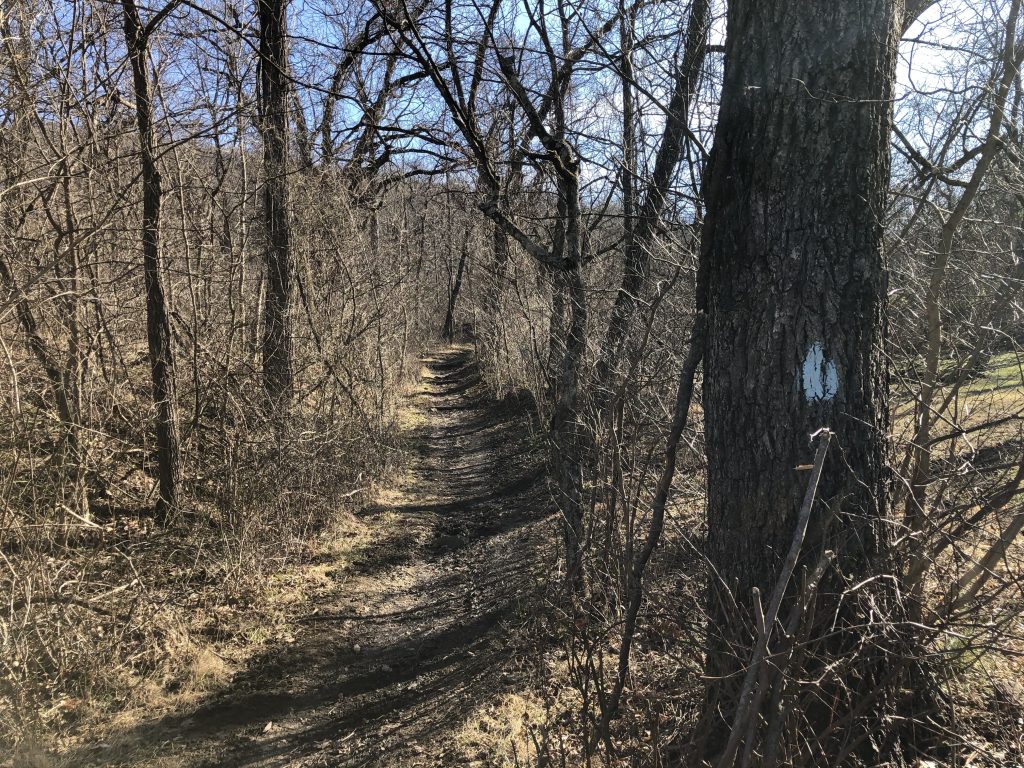
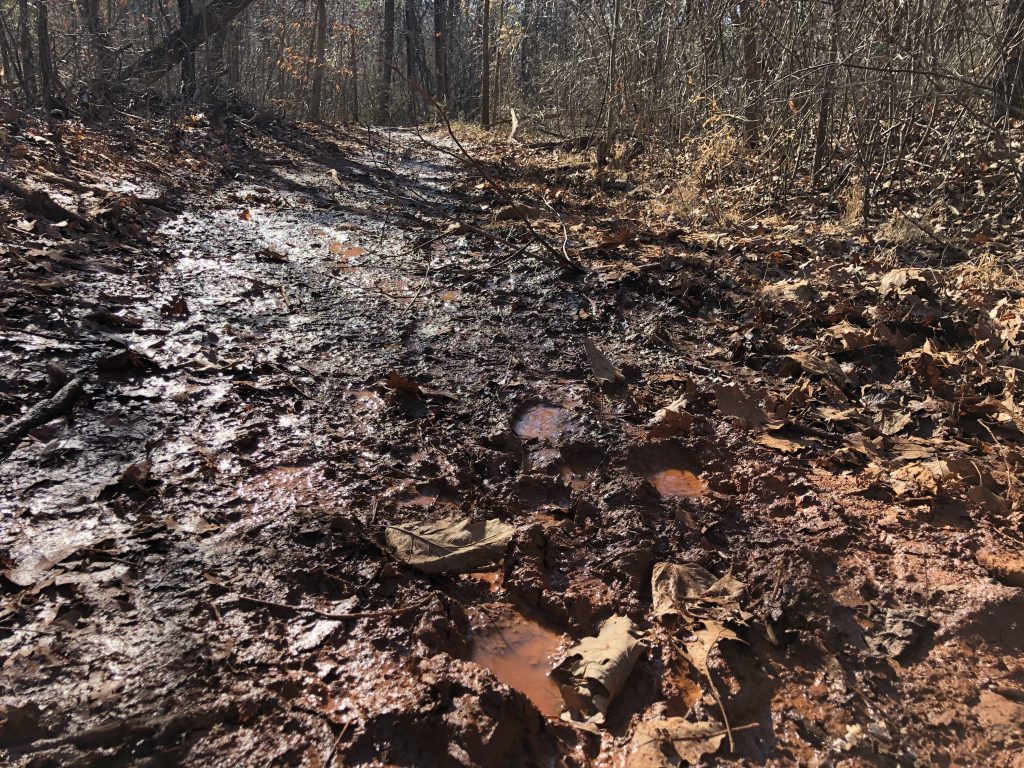
Thankfully the rest was downhill and flat alongside a beautiful stream.
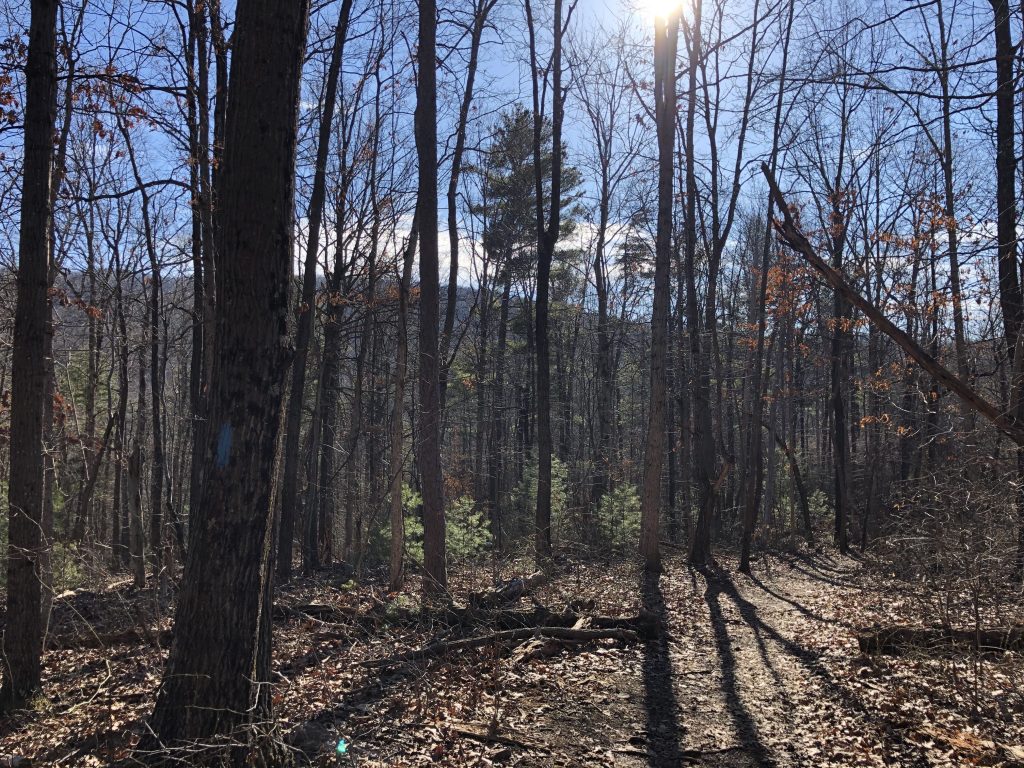
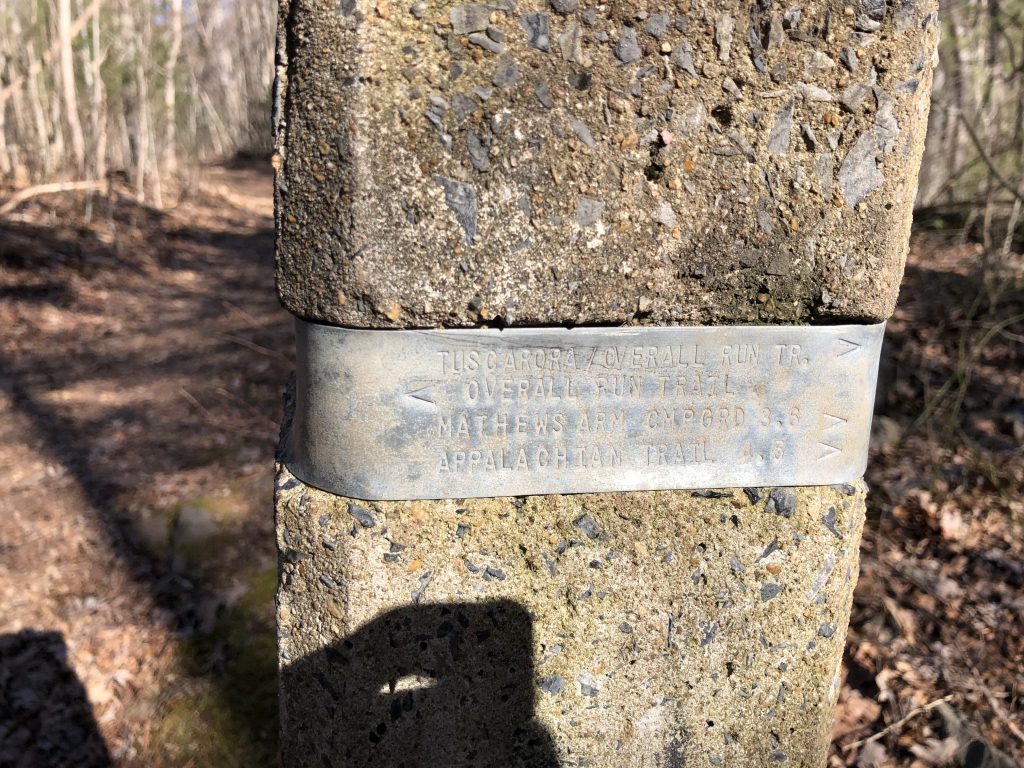
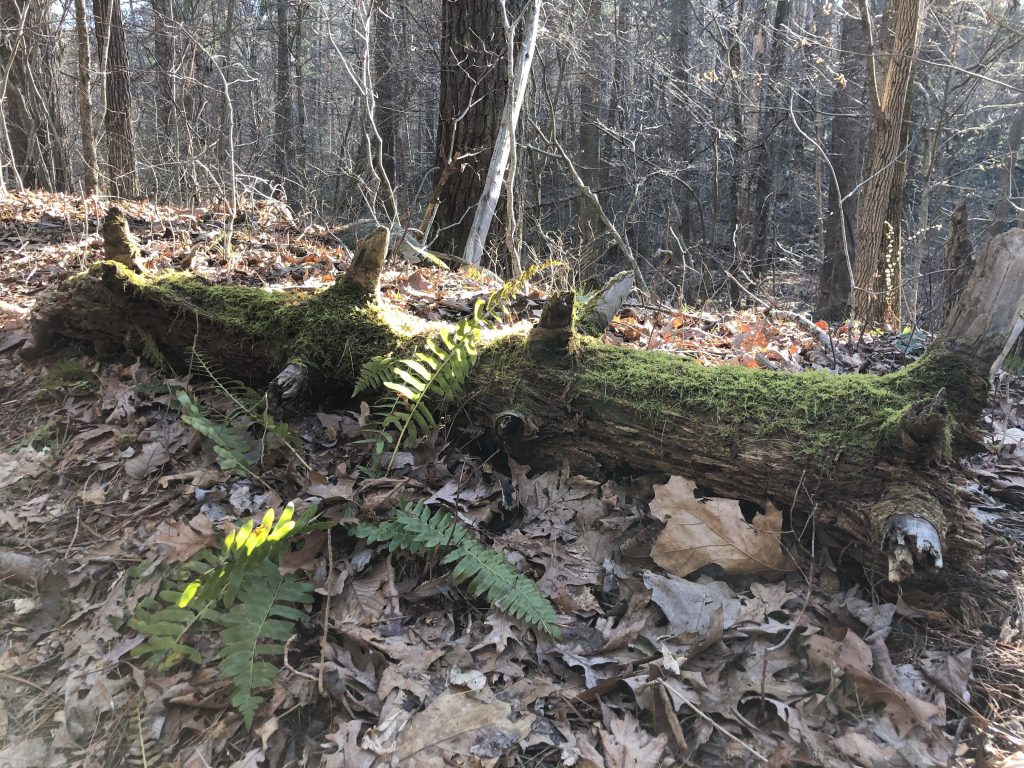
Super zen moment; no idea exactly where I’m going on a trail I’ve never been on, alone, in the wilderness with the sound of running water.
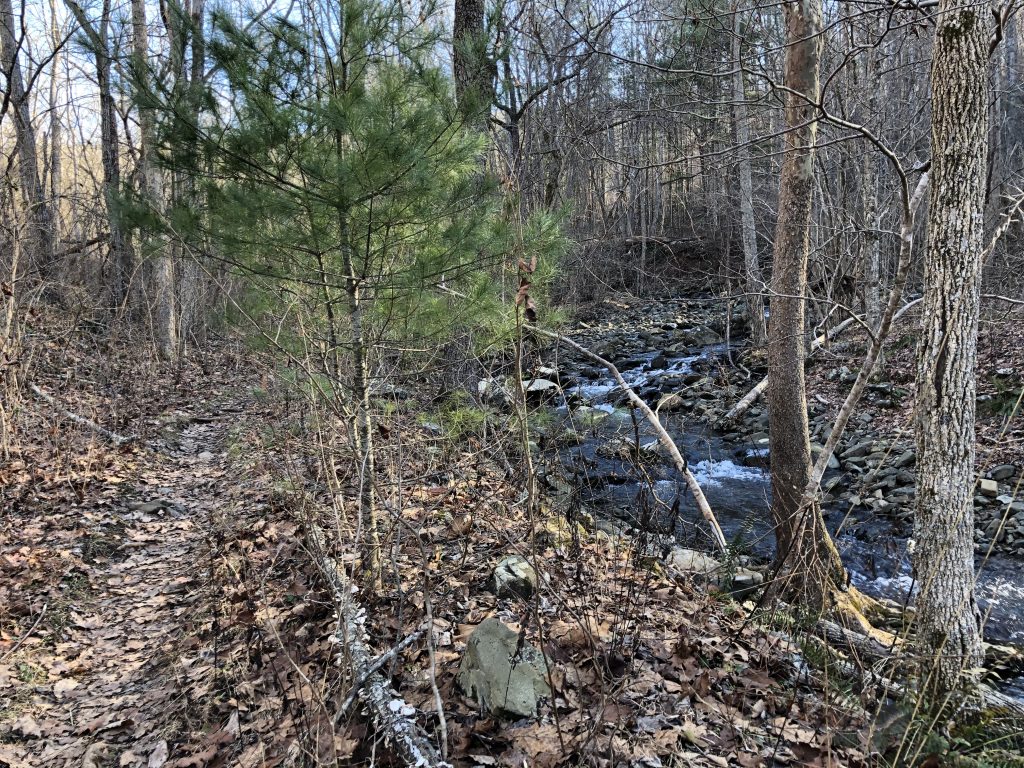
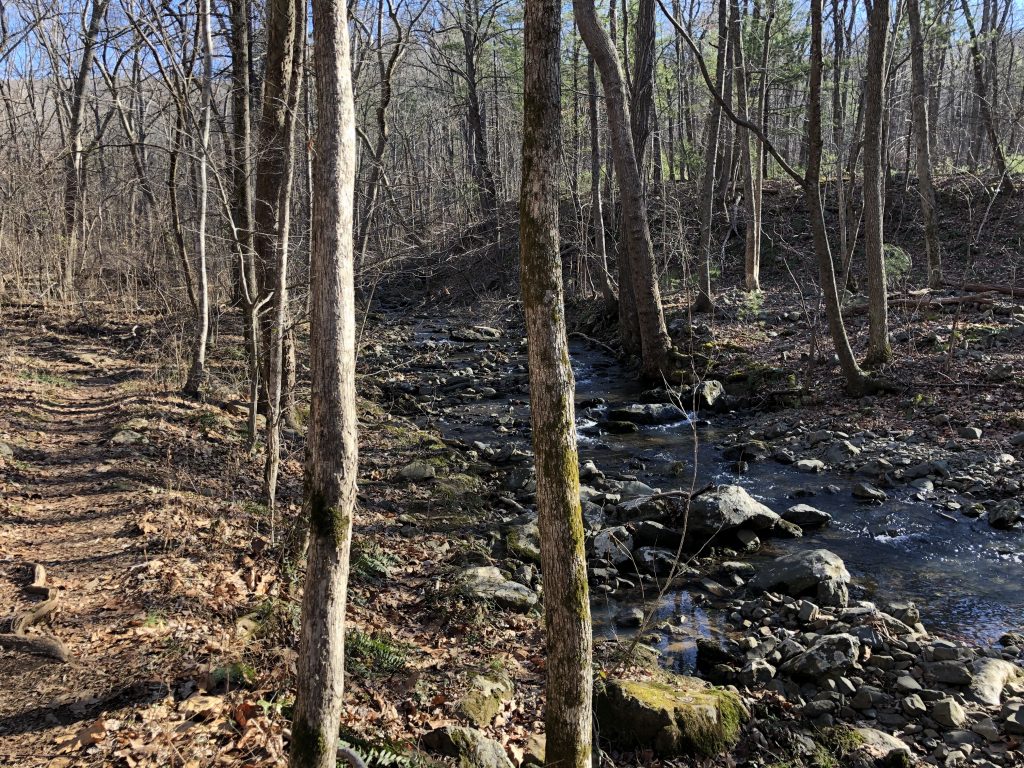
Now, I knew there was 1 stream crossing, but there ended up being a ton. Some were easy, but some were pretty big. While I had waterproof shoes, I didn’t want to get splashed on my socks as I only had 1 spare pair and it was already near freezing. The first crossing had a slippery rock way I saw 2 female backpackers do…
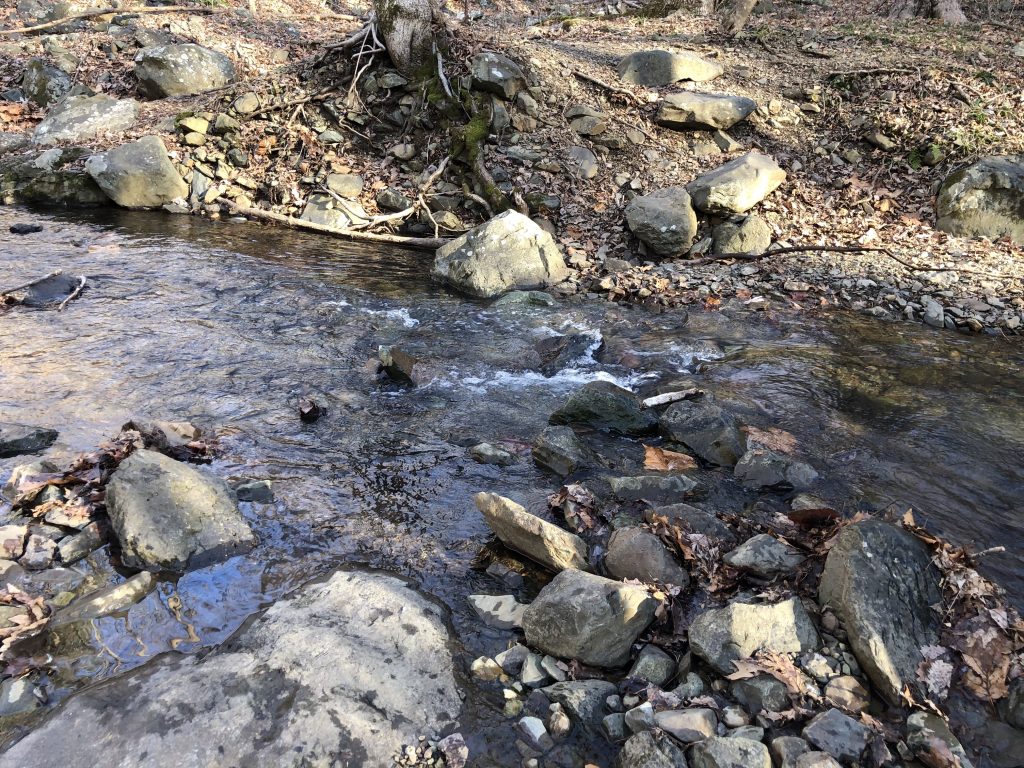
… or I could take the more fun way across a fallen tree. Duh, I took the tree.
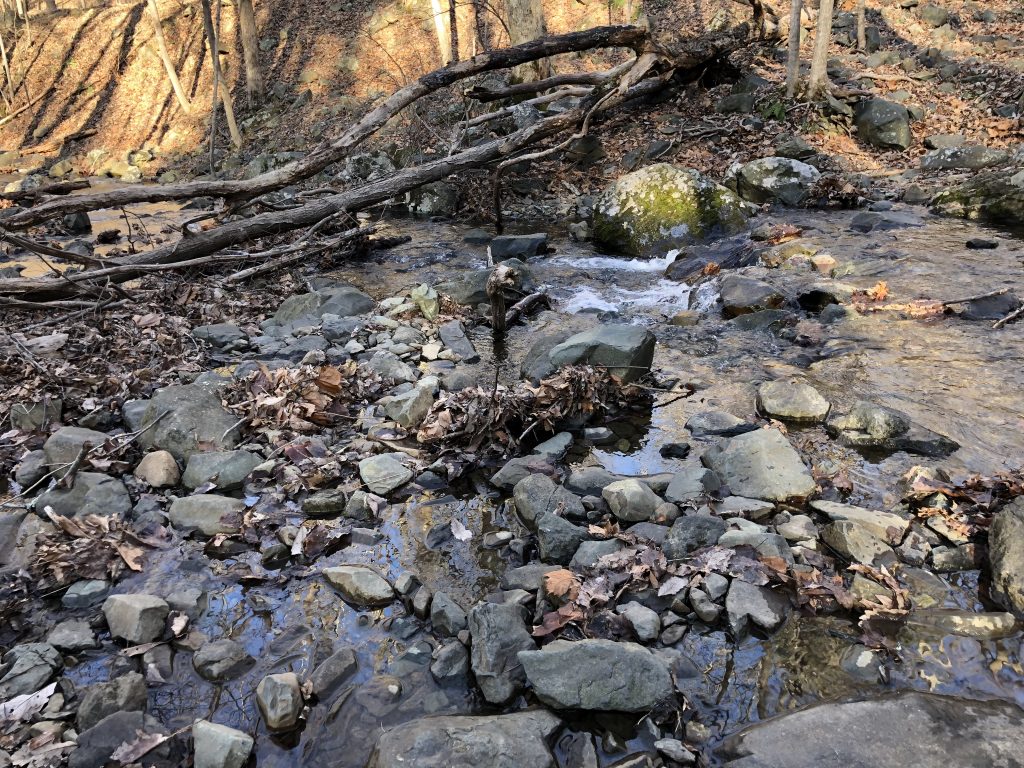
This is where things started to get rough. First, because 2 hikers going the other way had dogs I wanted to pet but couldn’t “because pandemic”. Second, it started going uphill… like non-stop. And rocky; many times the trail would just stop in boulders and you’d struggle to find a tree with a trail marker (blue or yellow dot). I started realizing 90% of the time I was unconsciously looking down to ensure good footing and somewhat ensuring I was on trail while not actually looking where I was going. Thankfully, this is when I started to lose steam (yes, less than 1 hour into my trip, lol). This forced me to stop every 30 feet / 10 meters or so and just breathe. While doing so, I ensured I could take in my surroundings, enjoy it, and remind myself I wasn’t in too much of a hurry. My concern was the sun was setting, and while it was 2:30pm and it gets dark at 5, you still lose light quickly if the sun hides behind a mountain. I HATE setting up camp in the dark. So I was a bit worried. In retrospect I shouldn’t have been; there were plenty of places to setup camp a long the way.
After a 90 minute slog of channeling my inner Gimli with “10 feet, breathe…. 10 feet, breathe…”
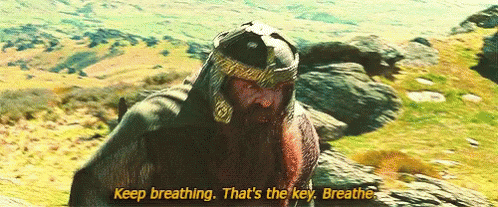
… I made it to near the top of the mountain and the first official backcountry campsite. Unlike regular campsites, no power, no water, no bathrooms, BUT it’s flat, and omg the view…
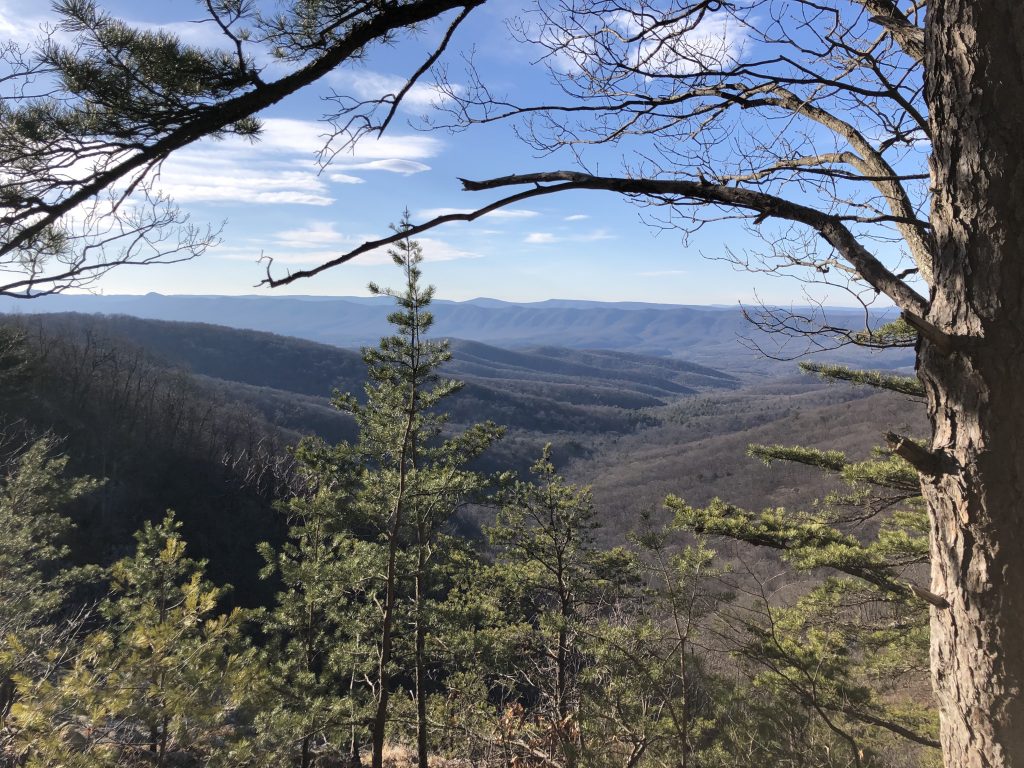
The waterfall, or rather, series of steep waterfalls, is on your left. You can hear it, but it’s not a loud drone, but just a nice, steady white noise. In retrospect, I should of just camped here. Next time. After some dangerous rock hopping, I found a really pretty stream covered by tree cover atop the waterfall.
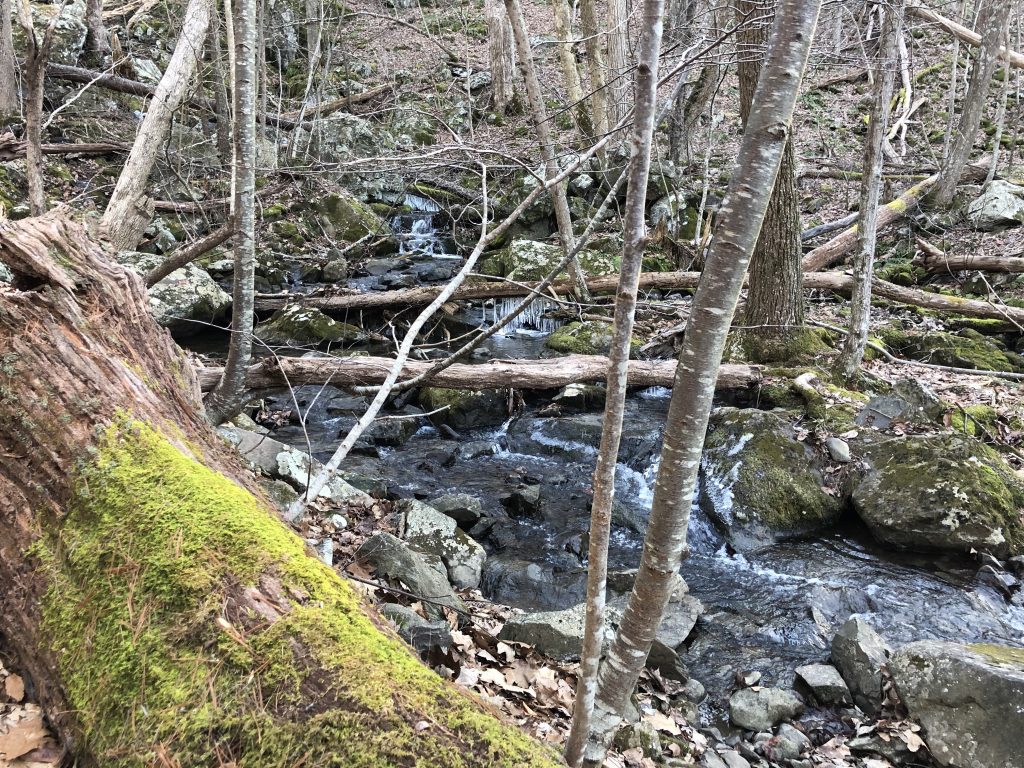
I got paranoid about the map because it said my turn was coming up. However, I had no cell phone signal and forgot where the plan said to get water, so figured better safe than sorry. That, and that water was so pretty I wanted to drink it after that insane climb, and I read running water is better for less bacteria/protozoa so tried my new water filter. I had practiced once at home. It only took 3 minutes; I was hoping to rest longer, heh.
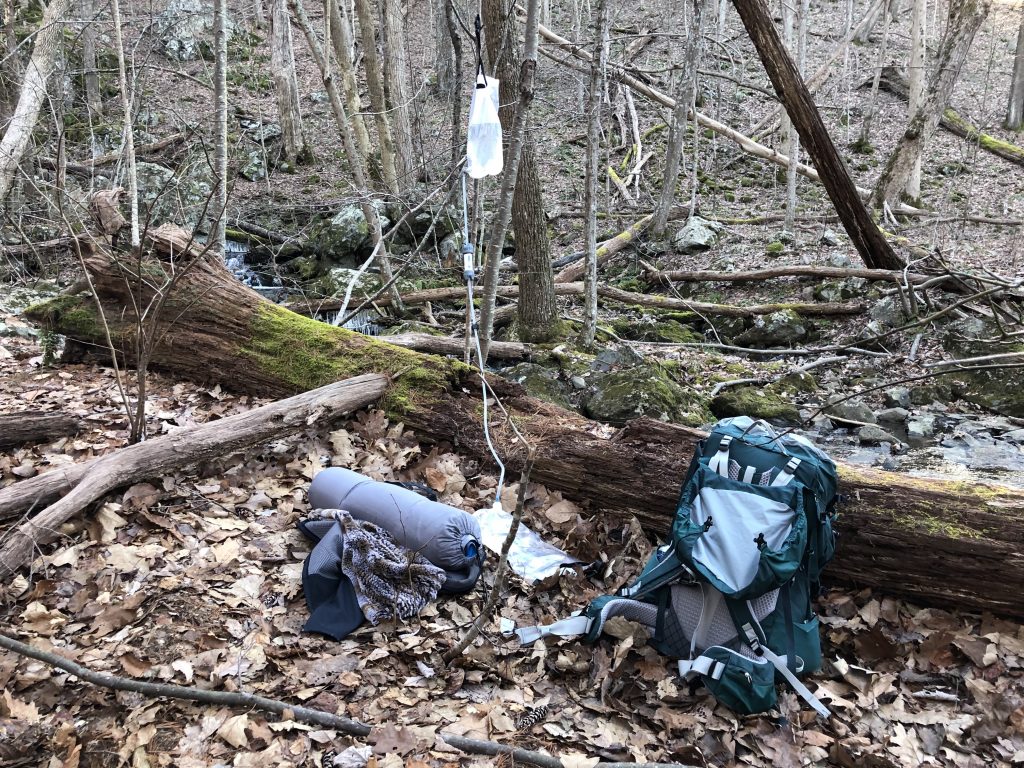
This ended up being a good call. The last stream crossing wasn’t as deep or as accessible.
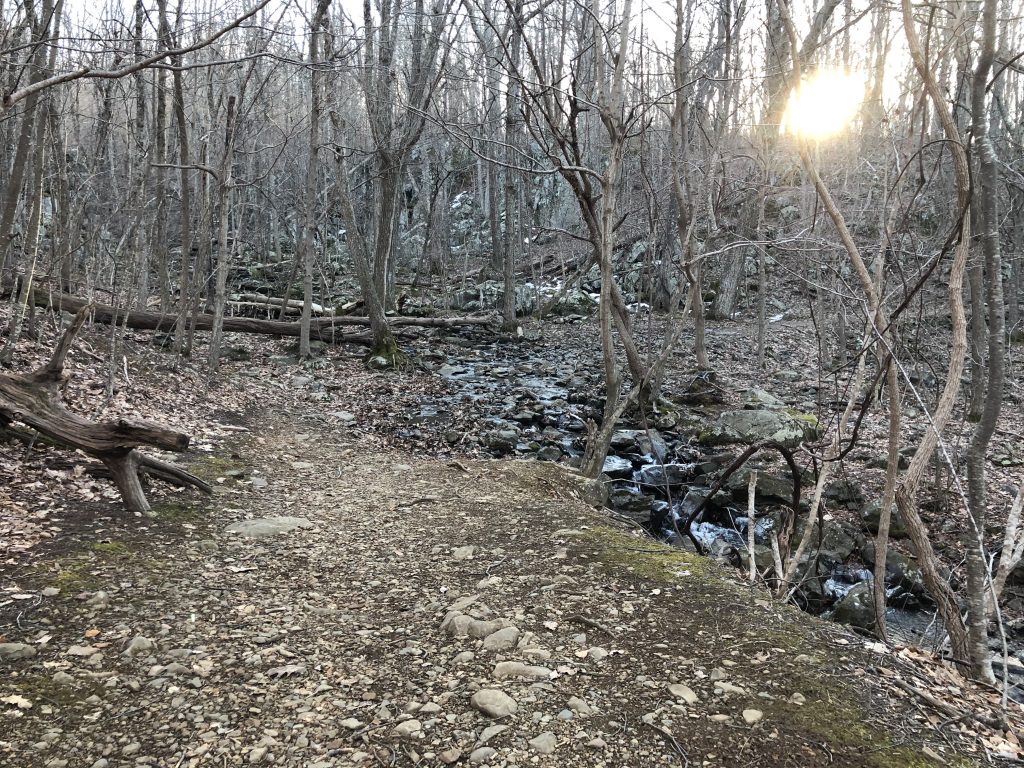
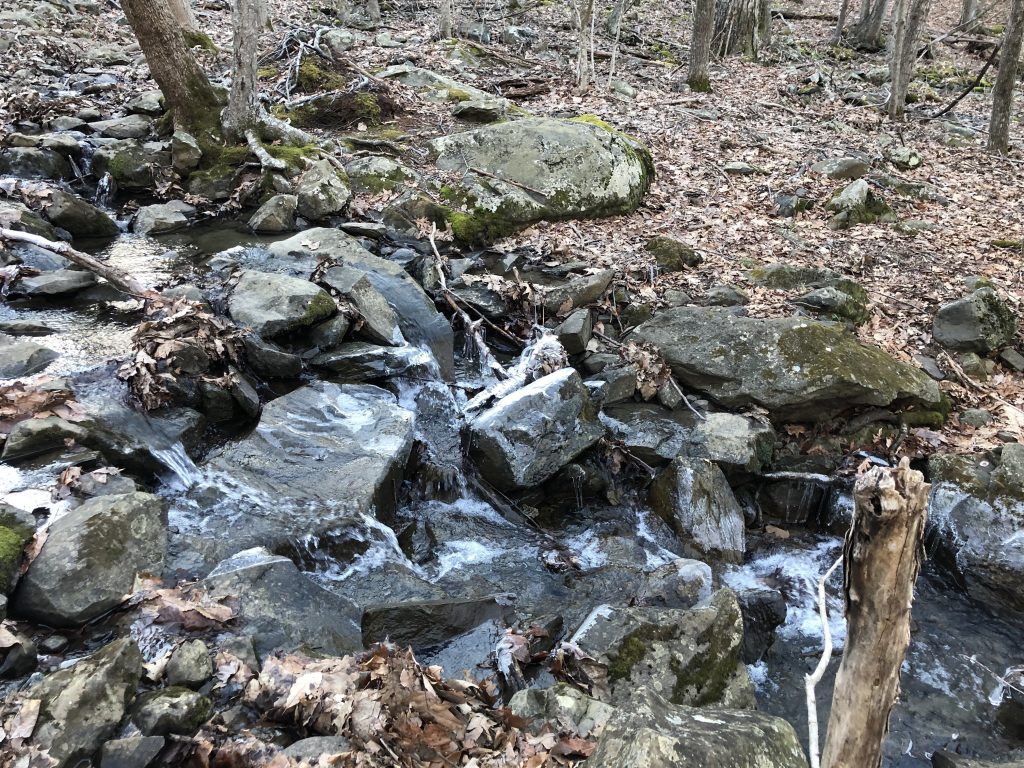
At this point, I was getting worried I wouldn’t find a campsite in time. Beecher ridge runs along the Beecher mountain, but it’s just covered in downed trees, boulders, and not a flat surface to be found. It’s 2.2 miles / 3.5 km long, and I didn’t want to risk it. I looked up the mountain, and realized it looked flat at spots. It was probably was an illusion, but I figured at worst, I could just hike to the top of the bloody mountain to find a flat spot before the sun set. When the sun would drop behind a mountain, I’d crest a hill on the trail, and it’d appear again, giving me confidence I still had some time.
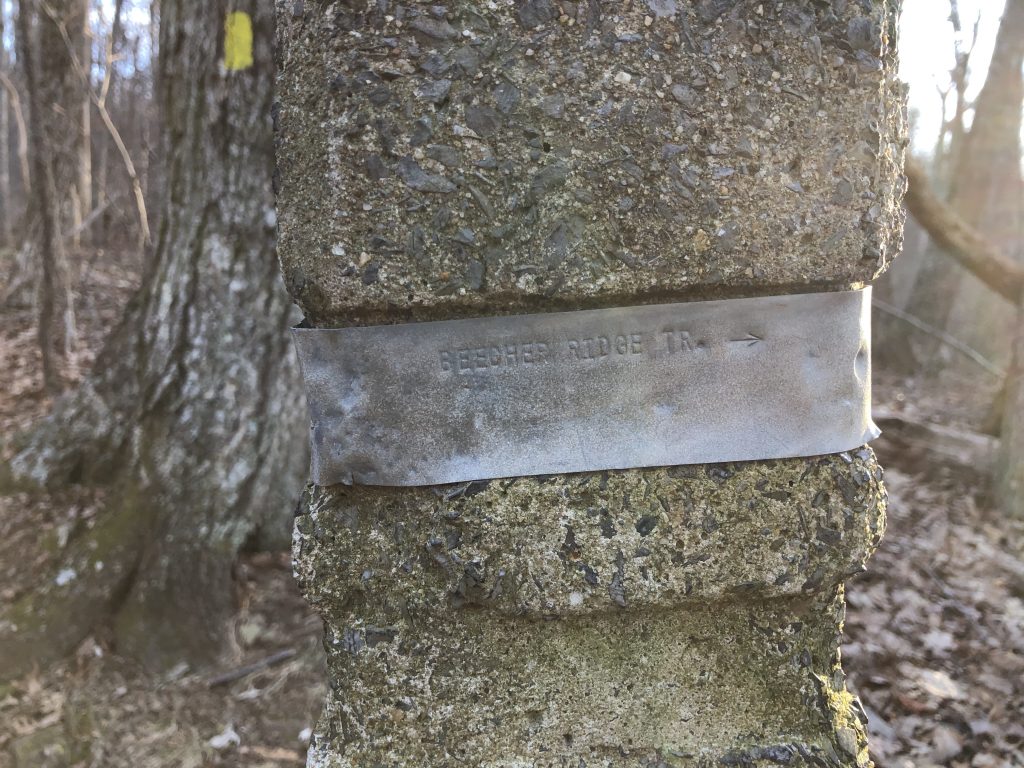
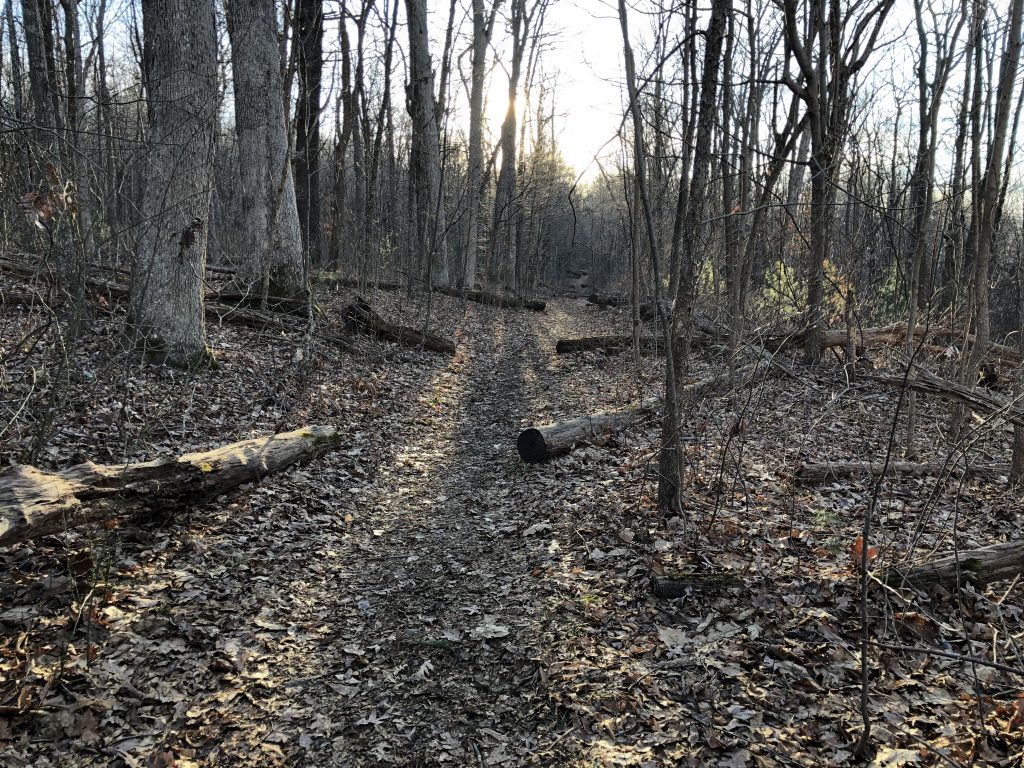
Finally, near the top, I found these 2 trees with 2 logs parallel. It was FLAT! It also had a low branch where I could hang my heavy water bag. And, damn good view of the sunset.
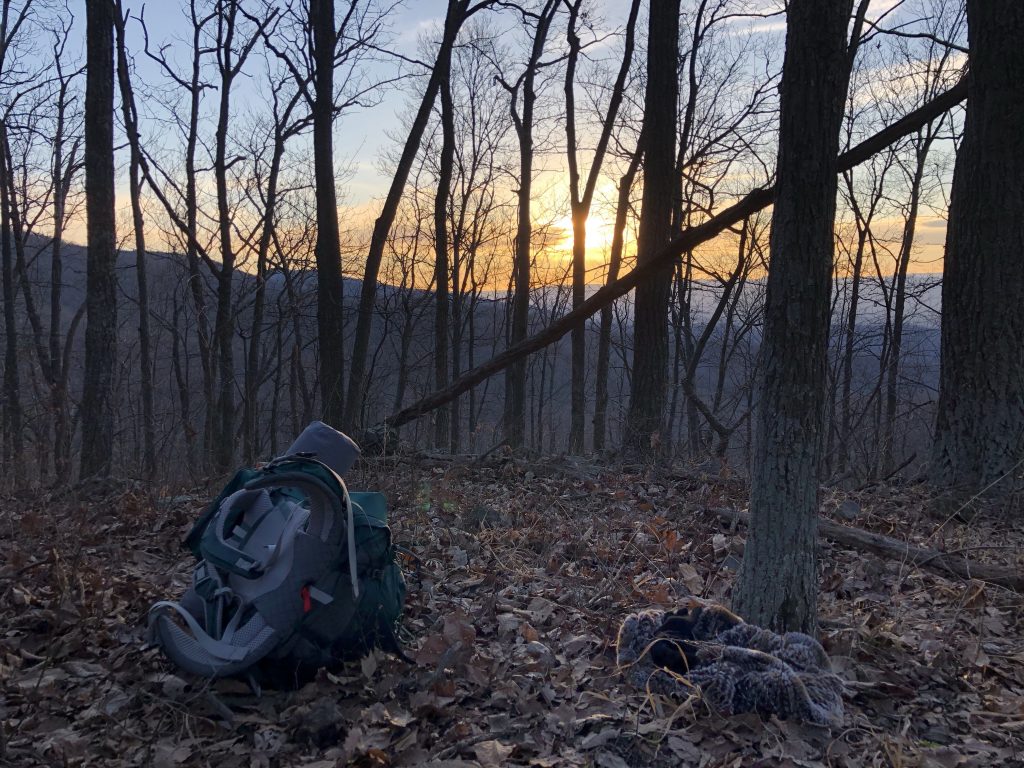
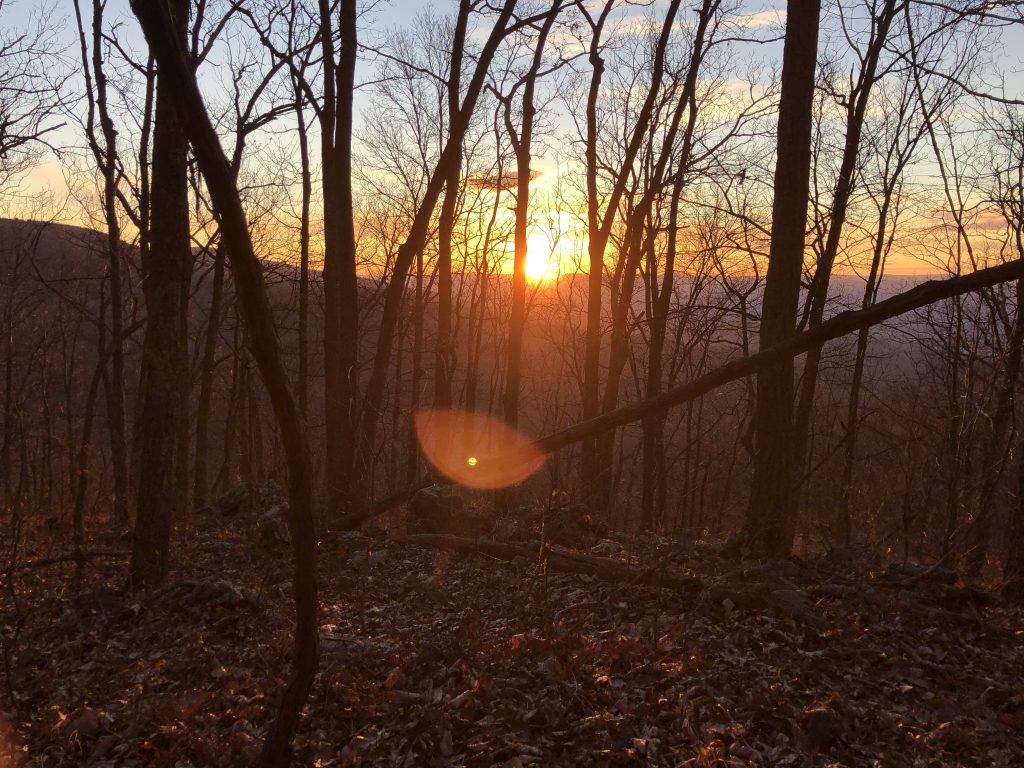
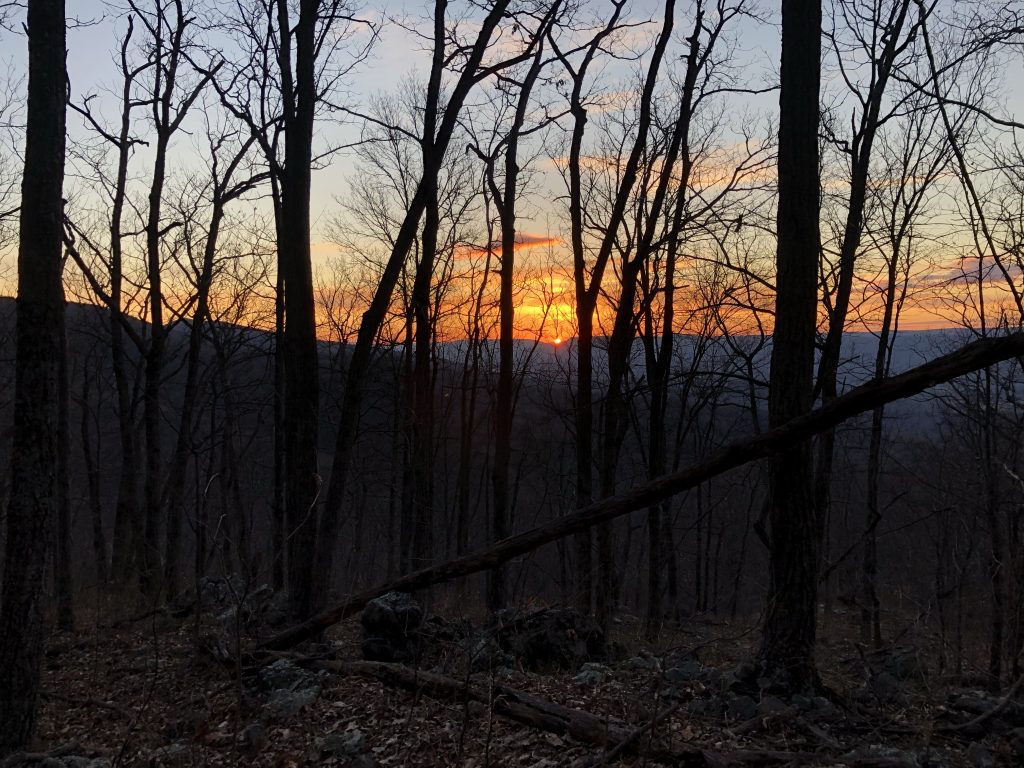
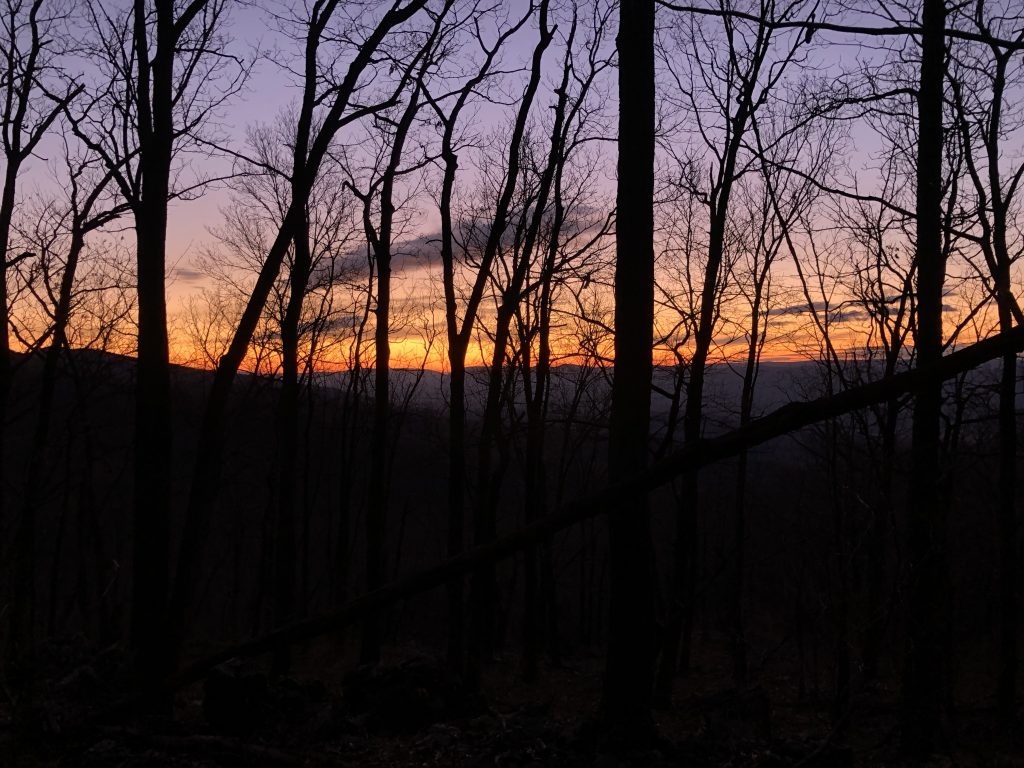
The bad news, something pooped a few days ago near the tree base. I googled bear poop, and thankfully that wasn’t it. I know they’re supposed to be hibernating, but just in case. I knew it wasn’t deer, too flat, so I just assumed something else but… big. Good news, there were so many large rocks around, I just grabbed one and slammed it down atop, and setup my sleeping pad so the foot end was near that tree.
At first, I tried setting up my tarp, but the trees were too close. Then I tried frantically at better trees, but the ground had 2 large depressions in it.
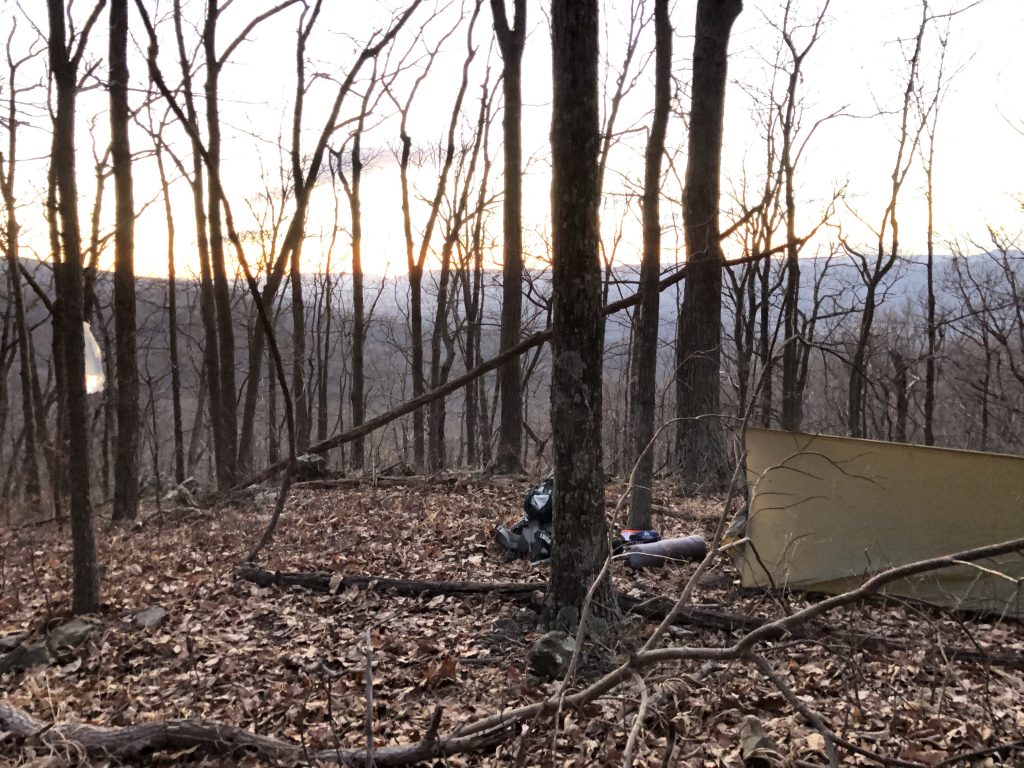
So instead, I re-tied it to the small trees, and just used the paracord to wrap around the tree vs. staking it, and it actually worked quite well, even while wrapping in the dark.
Eating dinner, I realized I had forgotten coffee. For whatever reason, I didn’t wake up the next morning feeling horrible without it. However, I had also forgotten spoons. The freeze dried food bags you put boiling water into assume you use a spoon to stir it and eat. I used a stick to stir it. I had a left over coffee cup from 7/11. The top was plastic, so I broke it in 2 and it made 2 really good spoons for both dinner and breakfast.
After dinner, I had the bear bag up and went to sleep around I guess 7-8pm. I don’t typically fall sleep till 11pm time frame, but I was destroyed. I woke up around midnight to a rifle blast and coyotes… AMUREKA! I figured I should go to the restroom, and holy fish it was quiet and dark. No full moon this time. But man, you could sure see the stars well. It was weird, too, to see the valley with a ton of lights aside the mountains west of Luray, but ALL of Shenandoah’s mountains were just pitch black. Super vulnerable feeling being alone there, but… cool at the same time.
I woke up to multiple footsteps in the woods around 8:30am that would start, take 4 steps, then stop.
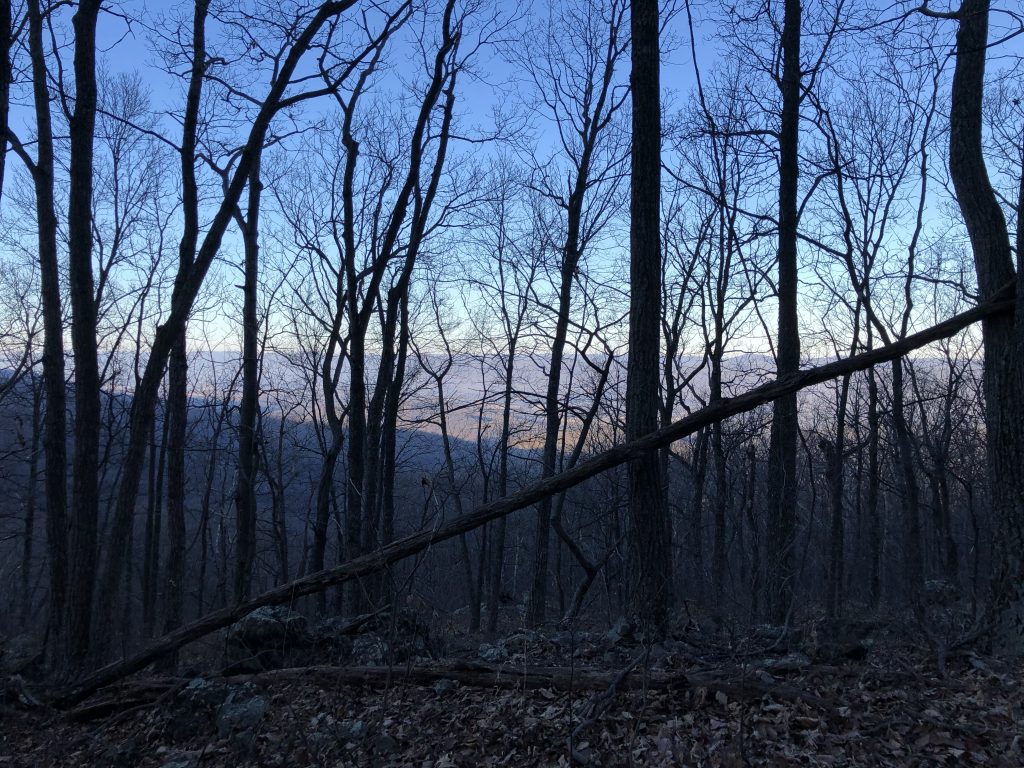
It turns out, it was 3 deer who were eyeballing my bear bag. They did NOT give a flip about me; clearly hikers have been feeding them.
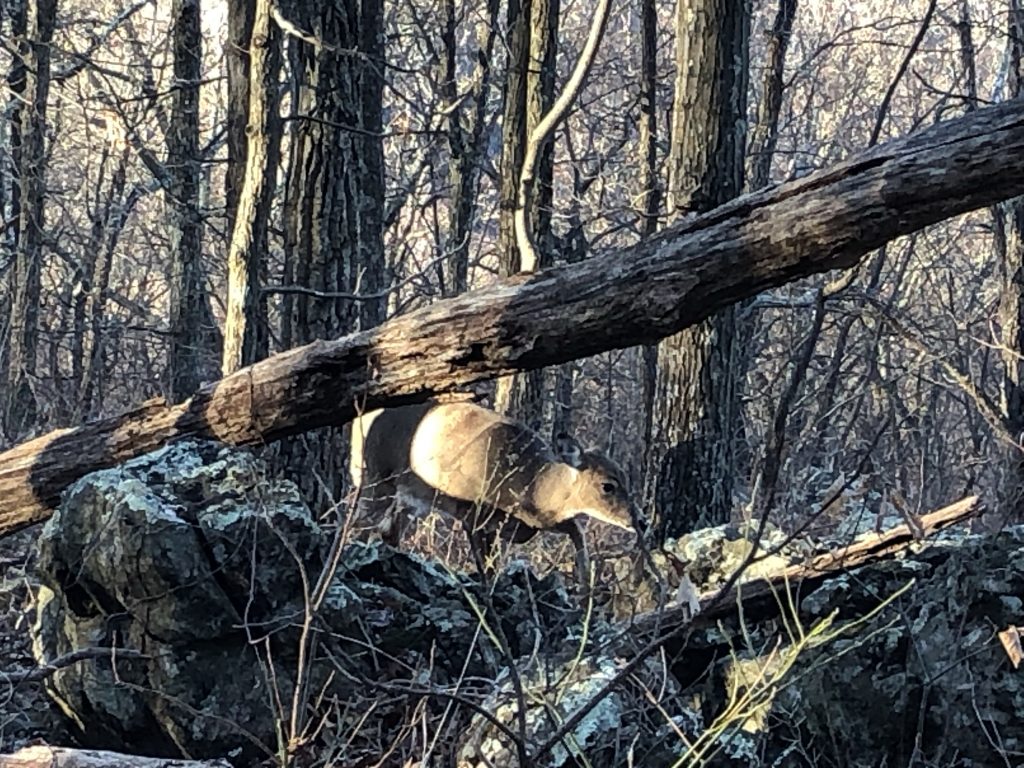
The hike down wasn’t as easy as I’d hoped. While downhill, it was some rough terrain. Steep in parts, tree trunks over the trail, multiple briars hanging over. However, it WAS on a ridge as advertised, pretty dope views. Did not see any viable dry camping spots, so I made the right call.


Once at the bottom, there were 3 stream crossings all right next to each other. I could see how being here in the summer would be amazing.
On my way out, I passed a snake in a drain; not sure how he wasn’t freezing to death.
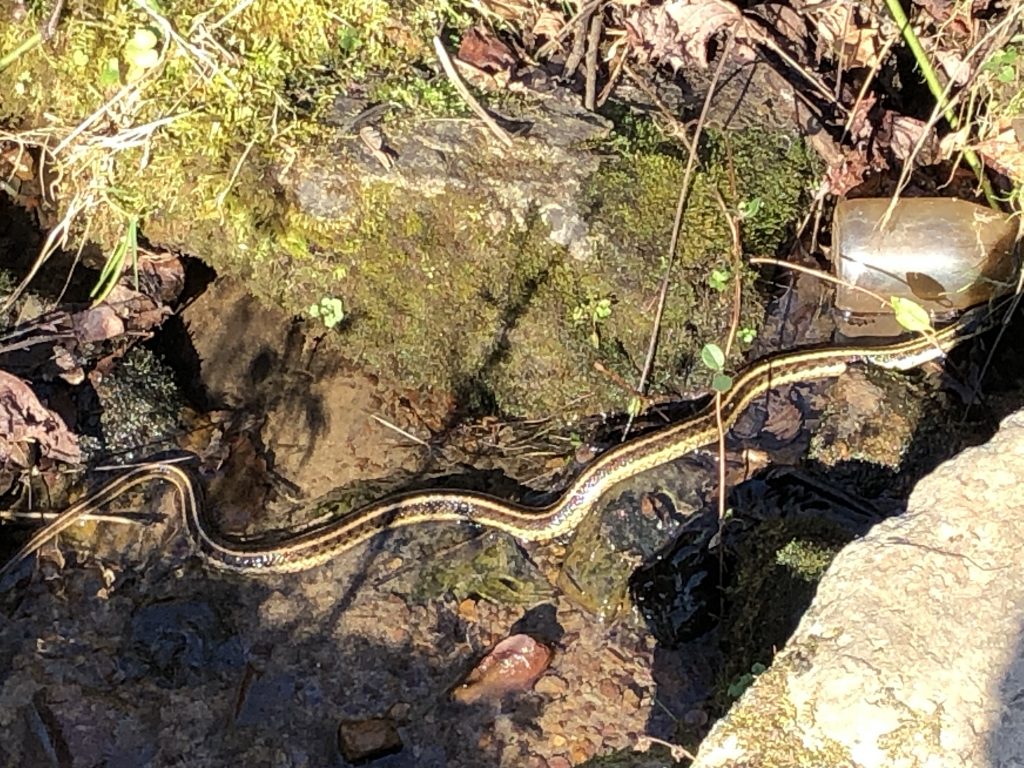
If I walked with my pack, I could wear just a shirt and gloves. But as SOON as I stopped, I had to don a hat, scarf, and coat, even in no wind. While the temperature hit above freezing around 10:00am, it still felt freezing when I stopped moving.
More Than 1 Night
Not sure where I’m going next time, but I definitely want to try one of the multi-night trips where you spend the night at least twice. I’ll have to work on lowering my gear weight, though. Even if I were in body building shape, that pack weight gets you. For now, using the tarp + sleeping pad is fine, I was super warm and the wind didn’t bother me. Maybe I should try leaving the sleeping bag insert and air mattress; they don’t feel very heavy, but I guess every ounce counts. That, and just bring 1 fuel can vs. 2 (I was paranoid my first one would run out). Always so much to learn!
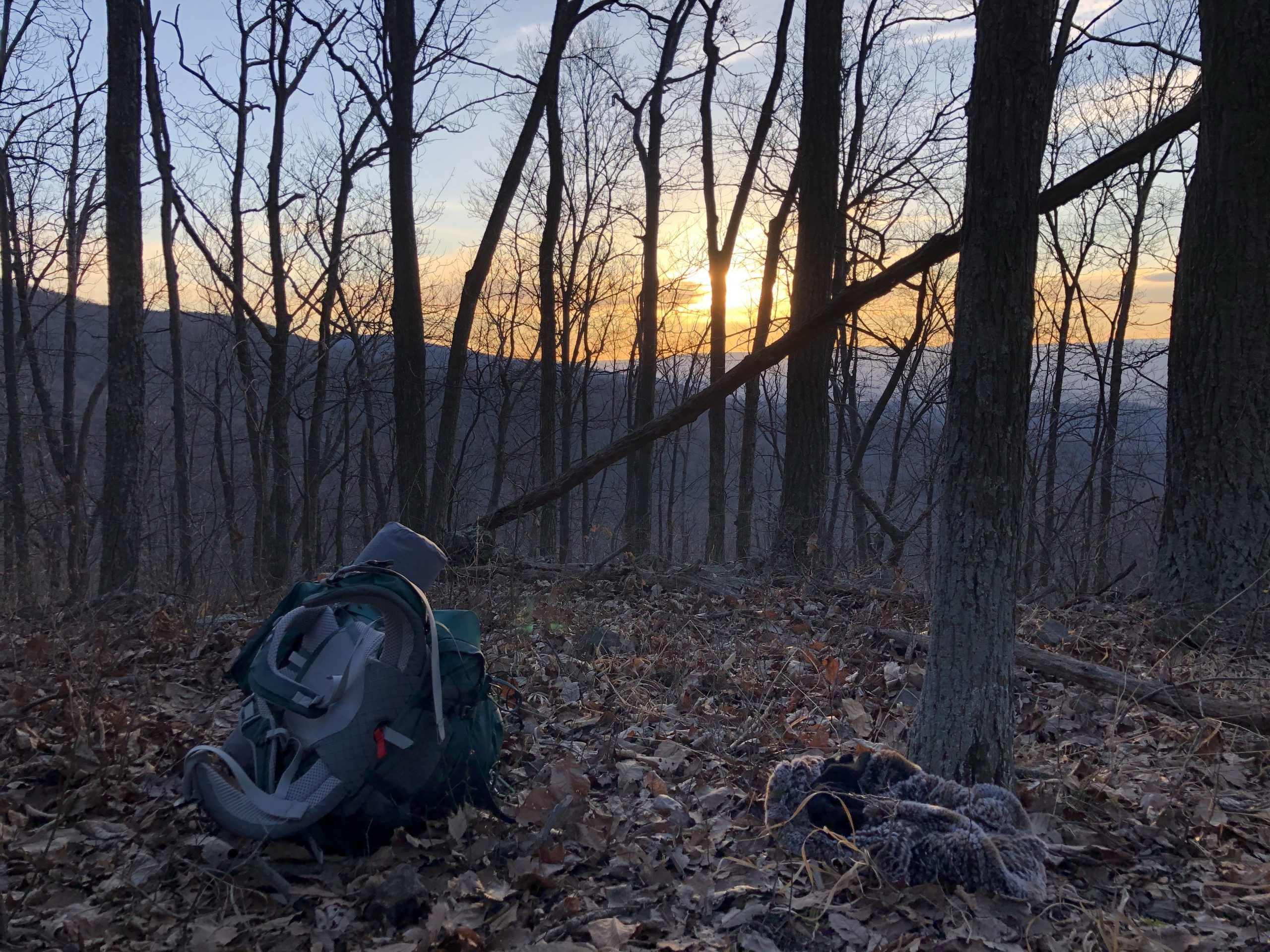
Comments
One response to “Beecher Ridge Backcountry Camping”
I’m so ecstatic at all the vista views, incredible scenery. Uh And no you can’t camp in the spring or summer because of snakes! I’m happy you enjoyed the streams and wildlife, and were able to have a dry camp on a clear night to enjoy. You have learned a lot in how to pack lighter each time and still manage to have what you need to eat and sleep. Thanks for sharing!